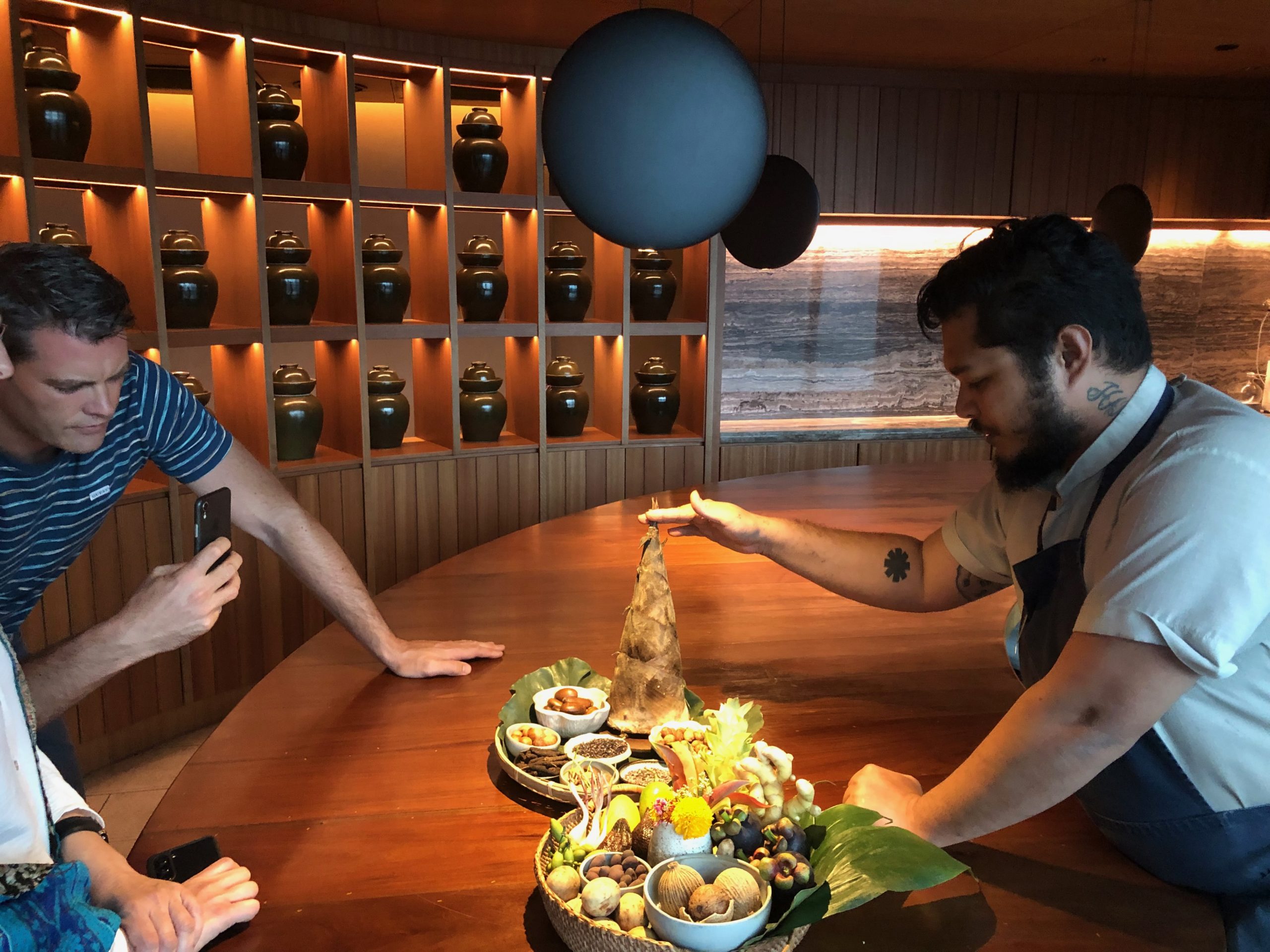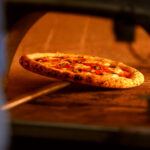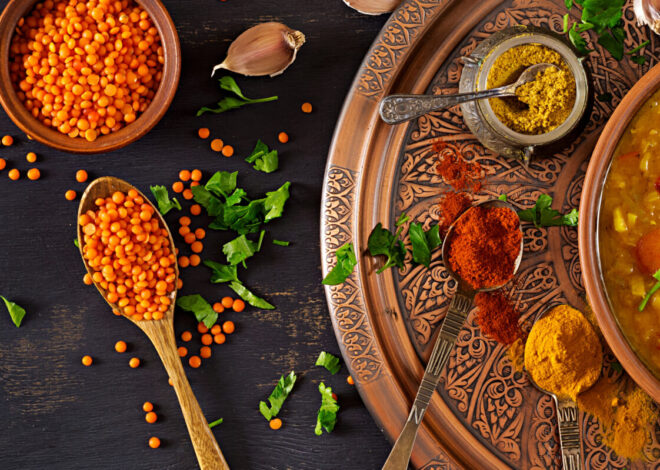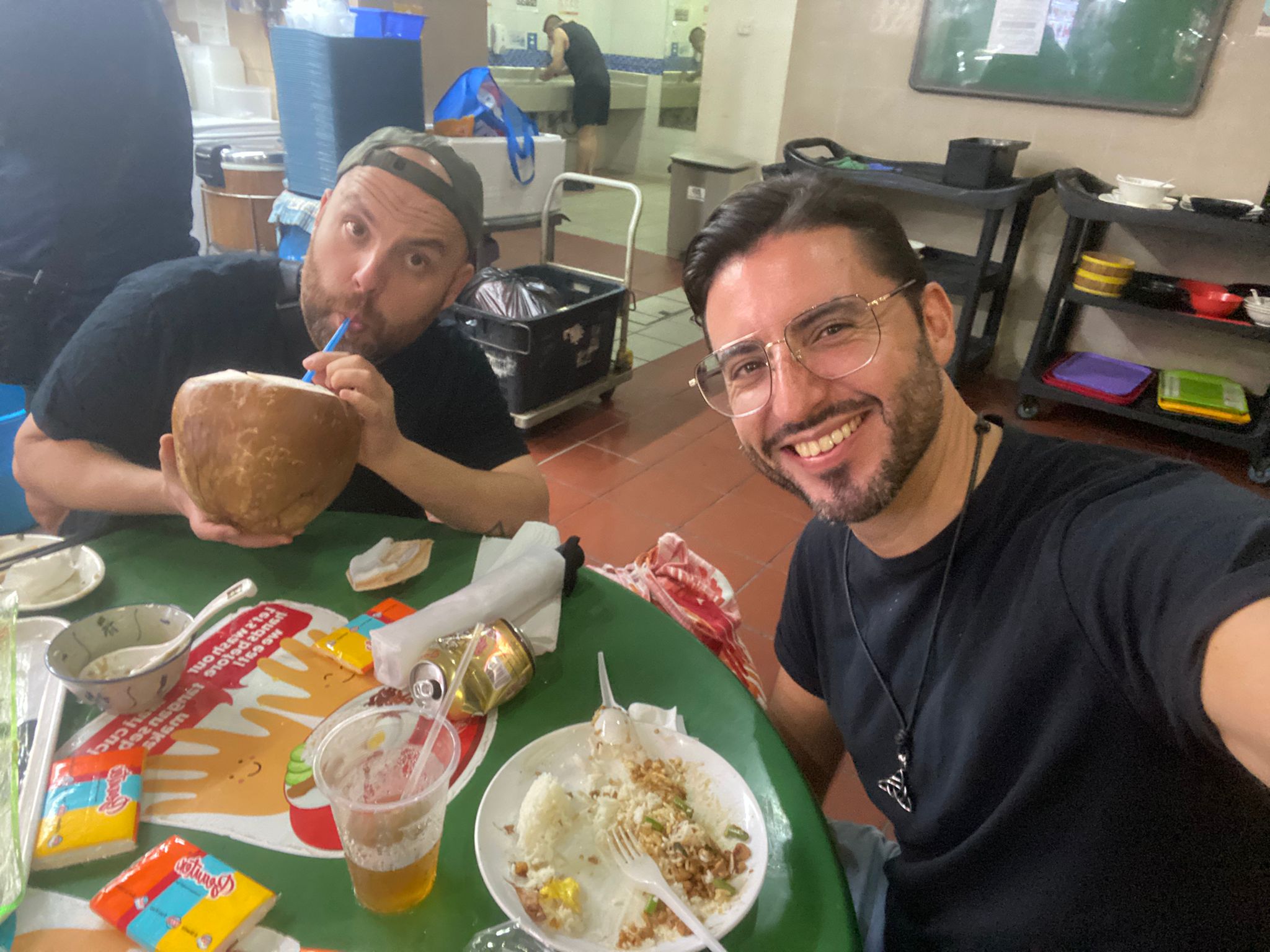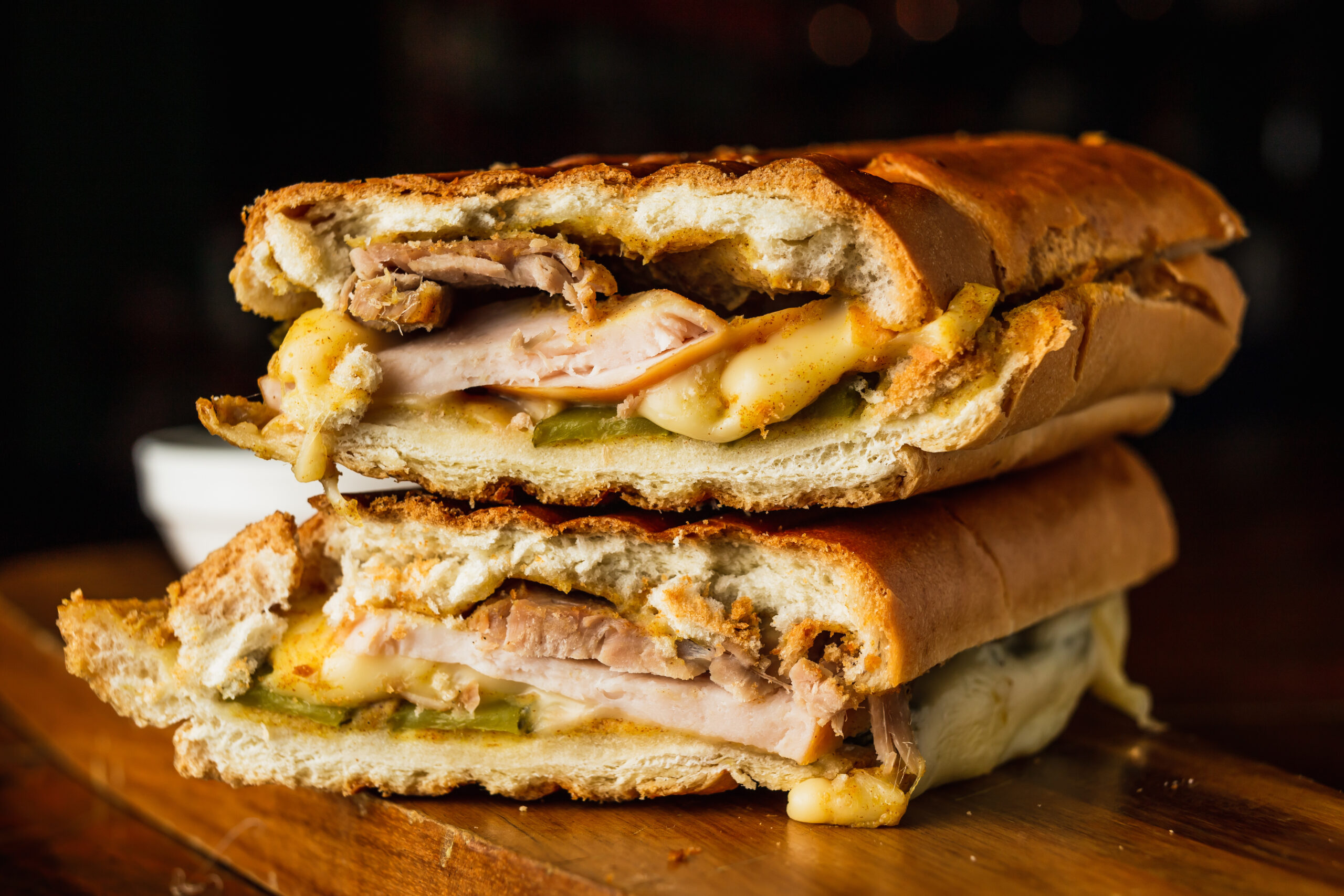
The Universal Sandwich: How Simple Food Conquered the World

Airports feel like a strange in-between place. You’re not quite here or there stuck under bright lights where food seems both necessary and ridiculous. Lines grow long at counters serving overpriced pizza that tastes like cardboard and salads that look half-dead. People pay far too much just to ignore that they’re stuck there. But even in this weird space, the sandwich stays on top. It’s easy to carry, reliable, and can be made in countless ways. It makes it through security and handles time zones better than anyone.
Listen to our sandwich episode: here
A sandwich has long been the ultimate traveler’s meal. Whether it’s Spain’s tortilla slices tucked into bread or Berlin’s döner rolled in soft flatbread, sandwiches are made to be eaten on the go. At airports, they become part of the routine—something to munch on while waiting or watching the departure boards. Chefs might create fancy meals in restaurant kitchens, but in airport terminals, practicality takes over. You’ve got bread filling, some salt, and a bit of fat. That’s it. Nothing fancy nothing complicated.
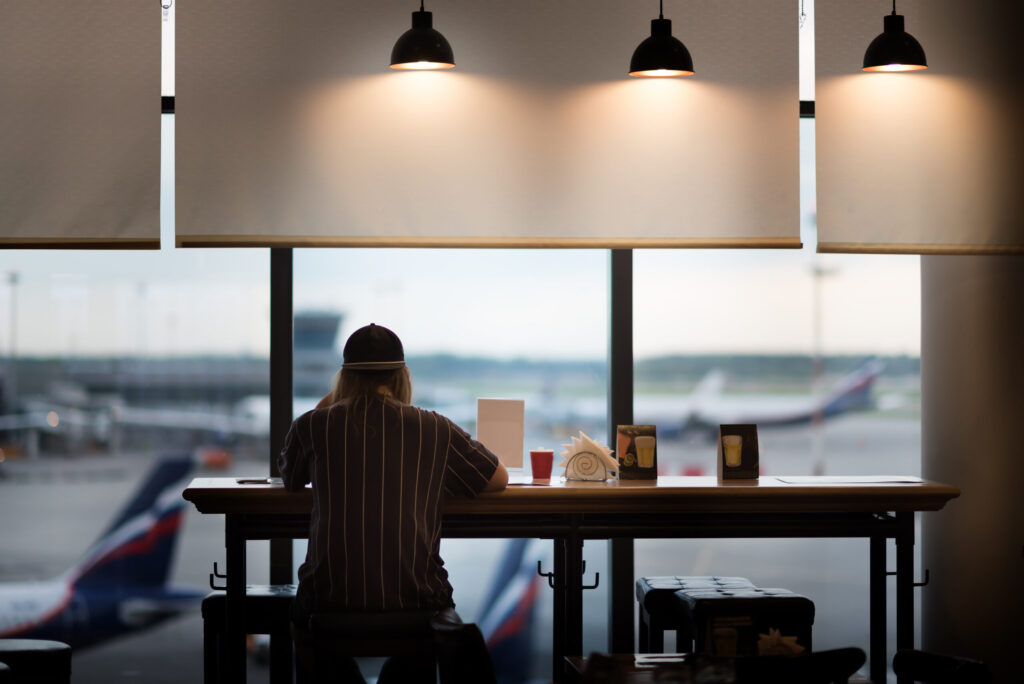
Tortilla Sandwiches: Spain’s Hearty Carb Fix
In Spain, sandwiches revolve around carbs. Thick slices of tortilla made from eggs, potatoes, and onions are often wedged into bread. The result feels heavy, simple, and satisfying. You’ll see it everywhere—schools, train stations airports. It’s food stripped down to the essentials. The focus is on energy, not elegance.
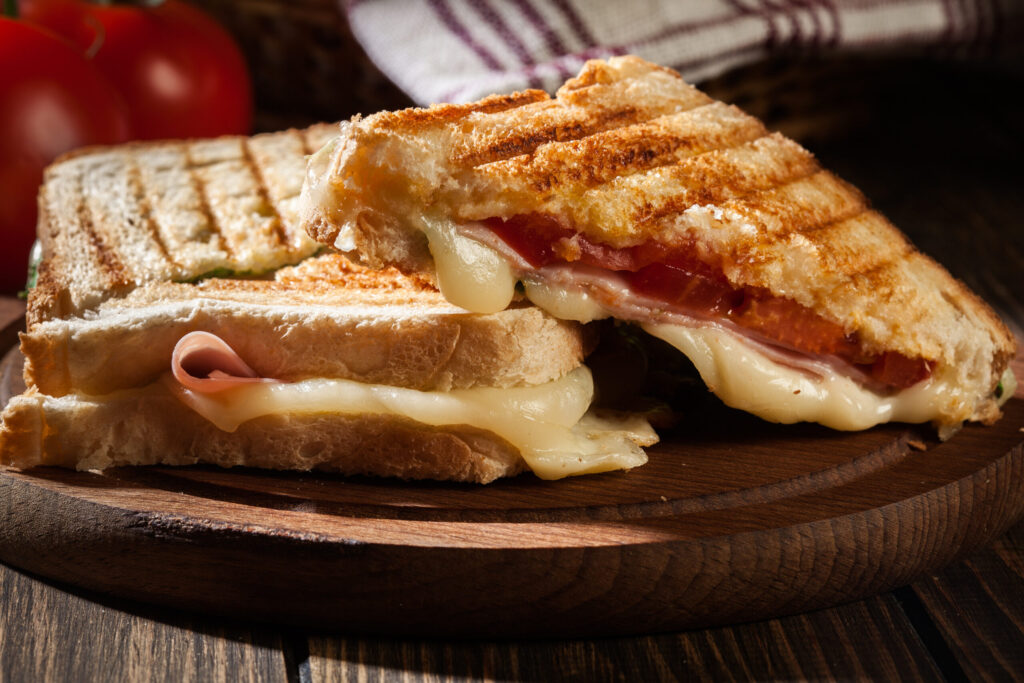
Carb-filled combos are part of the culture. Bread stuffed with fries. Chips folded into bocadillos. In Madrid calamari sandwiches are a thing—chewy rings tucked into a roll with just a squeeze of lemon. Traditional Spanish food doesn’t aim for balance when hunger strikes. It aims to fill you up fast.
For chefs, this idea shows cooking at its simplest. There’s nothing fancy—no extra sauces, no decorative garnishes, no tricks to distract. It’s just about the basics: protein, starch, and weight. Think of it as both a guiding tip and a rule—when unsure, focus on satisfying hunger first.
What Counts as a Sandwich?
The meaning is flexible. Is a burger a sandwich? Yes, it is. The patty melt—meat and cheese placed between bread—was one of the first versions of the modern burger. But push the question further. Does a wrap count as a sandwich? Or a Quesadilla? or even a Pizza? Knowing food means realizing that the lines aren’t always clear.
The focus isn’t about bread. It’s about convenience. Food designed to be portable. Something you can grab with one hand while the other handles a suitcase or a coffee. A sandwich isn’t just food. It’s an answer.
What restaurants and travelers both understand is simple: sandwiches are successful because all you need is hunger. They’re complete practical tools you can eat on the go.
Bread: The Structure Behind a Sandwich
Bread acts as the backbone. If it isn’t right, everything falls apart. In Spain, people make a bocadillo with crusty bread rolls solid enough to support jamón, cheese, or sausage without falling apart. In Japan, sandwiches lean towards the delicate side. They use milk bread cut into soft cloud-like slices that pretty much melt as soon as you bite them. Meanwhile, in Berlin, döner kebabs rely on flatbread tough enough to soak up lamb fat and yogurt sauce without breaking down.
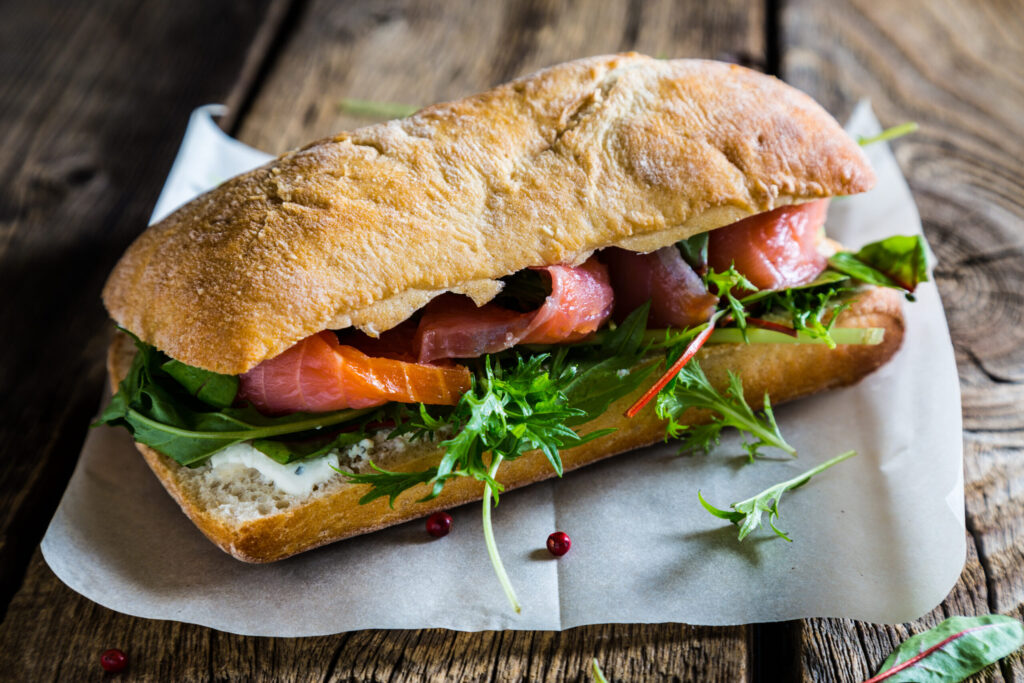
Some chefs fixate on perfecting dough. A baguette proofed too long and baked can transform pride into edible art. Brioche made richer with eggs and butter, enfolds fried chicken in soft sweetness. Hokkaido milk bread crafted with the tangzhong method, makes loaves so light they seem to melt on your teeth.
In restaurant kitchens, bread always holds importance. It’s the first bite, the foundation of the meal. A great filling means nothing if bad bread supports it, like building a grand cathedral on a weak foundation.
Condiments and Sauces
Condiments are not just add-ons. They bring life to a sandwich. Butter works as a timeless staple making bread tender and locking in its taste. Olive oil paired with tomato on Spanish bread changes ham into something almost sacred. Mustard bold and tangy, gives pork an edge that feels intense.
Mayonnaise can be a marvel or a letdown. At its peak, it mixes egg yolk and oil into a silky texture creating a creamy spread that sticks to salads and sandwiches. At its worst, it turns into bland processed mush squeezed into tiny packets at airport snack counters. Japanese Kewpie mayo, with its kick of MSG and tangy vinegar, highlights how great mayonnaise can taste—sharp, pure, and irresistible. Understanding food means recognizing these differences seeing when mayo enhances a dish and when it just doesn’t add anything special.
Mustard rules a world of its own. In Germany, jars range from sweet and coarse to as sharp as broken glass. In France, Dijon brings a tang from vinegar and seeds. Fig and olive varieties even sneak onto dishes. These aren’t fancy extras—they teach harmony. In restaurant kitchens, chefs skip debates. They taste the sauce, tweak it, and treat it with care.
Veggies and Pickles
Vegetables are more than garnish. They anchor the plate. Without lettuce and tomato, a BLT feels like endless bacon. Crunchy greens and juicy slices cut through richness, balance every bite, and keep flavors alive. Kitchen wisdom passed down is simple: staying fresh avoids feeling heavy.
Roasted veggies shake things up. In Catalonia, they make escalivada—smoky peppers, eggplant, and onion—stuffed into bread. It tastes deep, sweet, and so basic in the best way. There isn’t any meat or cheese the smoky flavor and rich oil soaked into the bread.
Pickles hold a kind of secret power. Thin slices of cucumbers biting jalapeños, and onions soaked until they almost shine. Jewish delis serve beet and horseradish mixes so strong they might clear your head. Sour green tomatoes turn into tangy zesty bites. Pickles feel like survival dressed up as something fun. They call to mind chilly cellars where less became more.
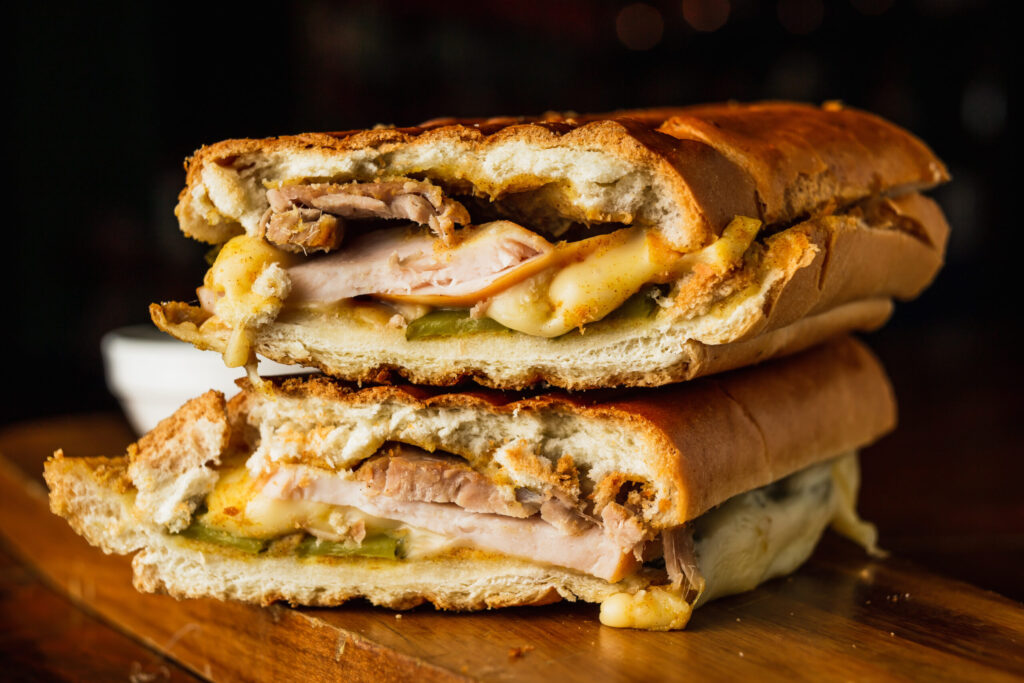
Spreads and Sweet Sandwiches
Spreads act like glue. They hold the sandwich together and keep it from becoming dry. Cream cheese hugs smoked salmon. Hummus keeps roasted veggies in place. Pesto adds a sharp flavor to mozzarella and tomato.
Sweet sandwiches break all the rules. Peanut butter with jelly, Nutella and banana, or even Nutella with sausage in Spain—they are wild, rich, and unforgettable. They laugh in the face of tradition but still stick around. A sandwich doesn’t need to be proper. It just needs to make you crave another bite.
Sausages, Cold Cuts, and Cheese
Slices of cold cuts tell a story. Chorizo, jamón mortadella salami—people made these meats to endure long before fridges existed. They used salt, smoke, and a lot of time to preserve them. Today, they tuck into bread and change the whole game. In Spain, people eat simple bocadillos with jamón, tomato, and oil turning four ingredients into a masterpiece. In Cuba, pork and ham combine with mustard and pickles pressed together into something extraordinary.
Cheese brings everything together. Goat cheese gives it a sharp kick. Emmental melts into gooey golden strands. A grilled cheese sandwich is just bread, butter, and some attention, but if you nail the proportions, it transforms into something . You press it, flip it, and let it cook. The crust breaks apart, and the inside stretches like molten cheese. It’s the clearest example that cooking doesn’t have to be fancy to be amazing.
Sandwiches Around the World
Japanese Sandos
Japan turned the sandwich into an art of precision and balance. They stack pork katsu inside slices of soft white milk bread. Egg salad gets whipped until creamy, with yolks that shine like gold. The crusts get trimmed off leaving perfect squares. The textures amaze—soft bread melting away followed by crispy cabbage or crunchy fried pork. It feels like a lesson in keeping it simple and showing how that simplicity can captivate.
Italian Tramezzini and Trapizzini
Italy leans into rich comforting flavors. Tramezzini are delicate sandwiches with white bread packed full of fillings like tuna, prosciutto, or artichokes. Trapizzini, a Roman favorite, takes pizza dough and turns it into handheld triangles stuffed with oxtail, eggplant, or meatballs. It’s a pure reflection of Italian cooking—using bread to carry hearty leftovers straight from the pan.
Berlin’s Döner Craze and Its Global Counterparts
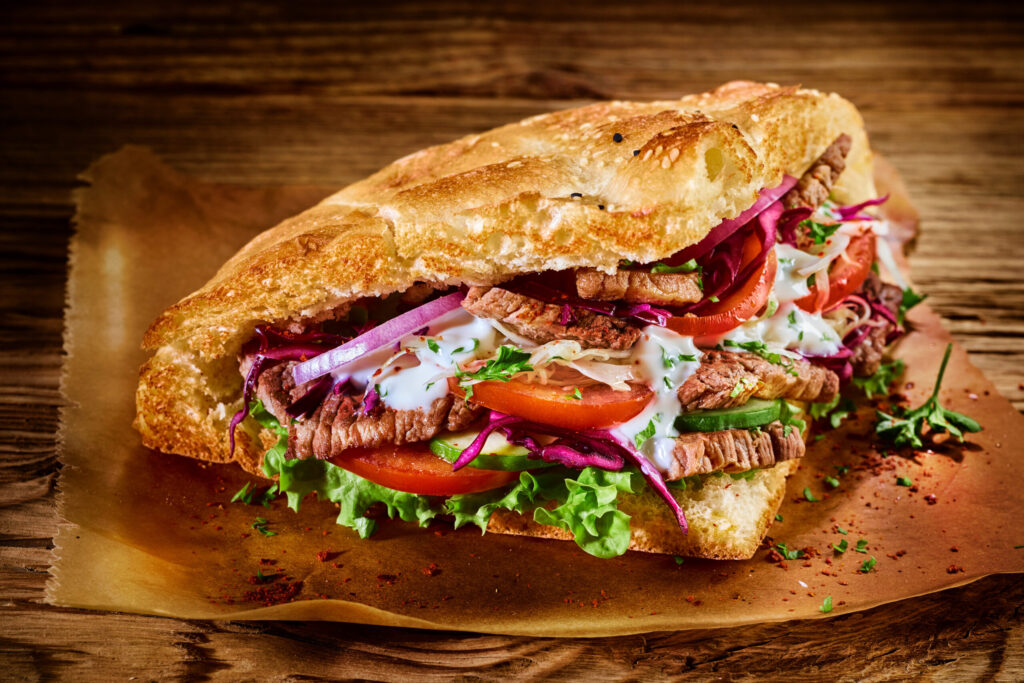
Berlin treats döner as more than food. They take flatbread, cut it open, and stuff it with lamb or chicken red cabbage, onions, and a mix of yogurt and chili sauce. Within moments, the juices seep right through the wrapper. What started as a humble immigrant dish now stands as a national icon. In Mexico, there are tortas packed with layers of avocado, beans, and pork. Over in Guadalajara, tortas ahogadas come drenched in chili sauce turning them into a fork-and-napkin battle. In Venezuela, roast pork, or pernil, gets squeezed between rolls and savored. Meanwhile in Bolivia, two sisters run competing pork sandwich de chola stalls packed with loyal crowds, each claiming to serve the true original.
Scandinavian Smørrebrød
In Denmark, smørrebrød is always served open-faced. People use sturdy rye bread spread with butter and top it with pickled herring, eggs, shrimp, and dill. It feels more like an experience than just a meal. You need a knife and fork to eat it because every bite is rich with tradition. It’s old-school food dressed up like a quick office snack.
Technique Tips
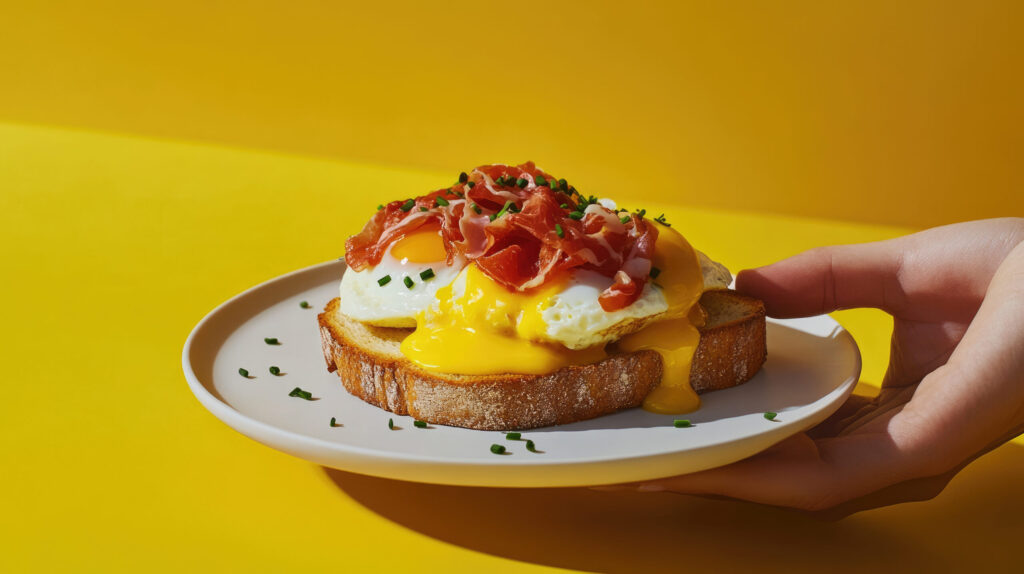
Good technique makes the filling belong with the bread. They toast the bread enough to hold firm but not enough to hurt your mouth. Some buns are seared on flat tops until the butter gives them a shiny coat. Panini grills push all the fat and sauce together into a melty mix.
Grilled cheese is the ultimate classic. Coat both sides with butter. Cook , press with care, flip just once. Let the crust crackle when you bite and the cheese pull when you lift. In kitchens, line cooks perfect this before they’re allowed near open flames. Simple things prove real talent.
Sandwiches Worth Remembering and Where to Get Them
In London, Dusty Knuckle Bakery crafts towering creations packed with roasted veggies and cured meats. Their bread baked hearty and firm, holds everything together. Over in Florence, All’Antico Vinaio serves gigantic sandwiches stuffed with salami, creamy pecorino, and artichokes. Long lines fill the old stone streets outside.
Anthony Bourdain always praised fried mortadella with mustard—simple, , and full of flavor. In Spain, people treat Iberico ham with tomato and olive oil almost like a sacred ritual. Over in the Balearic Islands sobrasada, a soft and spreadable sausage, pairs with cheese and honey for a mix of sweetness and boldness. Walk the streets in Madrid, and you can grab a calamari sandwich—just bread and squid tough yet satisfying in its simplicity. Meanwhile, in San Sebastián, pintxos take the sandwich concept and shrink it down, each bite a small tale of salt, fat, and crusty bread.
Conclusion: A Bite of Culture
Sandwiches mean more than just quick bites of food. They are about staying fueled expressing beliefs, and keeping traditions alive. They pack stories, journeys, and history into a form you can carry—no plate needed.
Restaurant insights make it clear: the sandwich is not trivial. It’s proof of craft. Bread as architecture. Pickles as punctuation. Meat and cheese as memory. Condiments as balance. Cooking tips are simple but eternal: respect the bread, balance the filling, don’t overcrowd.
The best destinations for foodies aren’t only Michelin temples. They are bakeries in London, döner stalls in Berlin, street torta vendors in Mexico, pintxo bars in San Sebastián. Sandwiches show that gastronomy doesn’t need chandeliers or waitlists. It needs bread, filling, hunger, and honesty.
The sandwich doesn’t ask for reverence. It just works. And that is why it endures.
Pot Luck Food Talks is a global podcast exploring the crossroads of food, culture, and creativity — hosted by chefs, storytellers, and curious eaters from around the world.
🎧 Listen to our latest episodes — click here
🍷 Join a food tour in San Sebastián with Erich Eichstetter — click here
💼 For collaborations, consulting, or advertising inquiries — get in touch here
